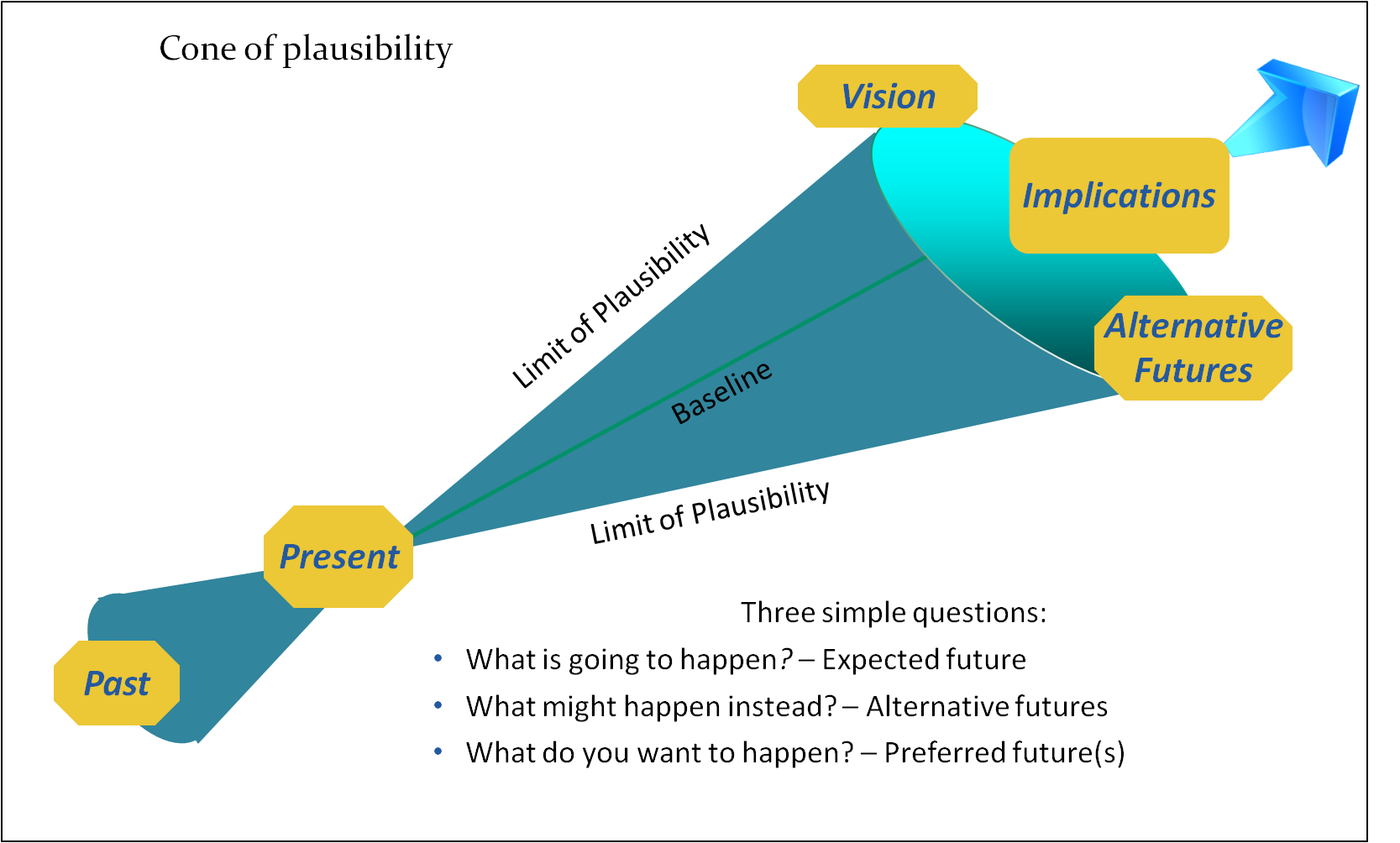In fact, foresight professionals find it useful to distinguish at least three views of the future:
 Expected future
Expected future
Most organizations have a collective view of the future they anticipate. The expected (or official) future almost always turns out to be wrong in some significant ways.
 Alternative future
Alternative future
These are the various possible ways in which the future may unfold. Together they define a “cone of plausibility”—the range of futures that may be reasonably anticipated.
 Preferred future
Preferred future
Many organizations and individuals also have a vision of a future they prefer and are working to create.

Foresight is the discipline of engaging the future——a set of methodologies and best practices to:
Understand what’s changing.
Foresight professionals cast a wide net to identify weak signals of change, the trends that may emerge from them, and the driving forces that underlie them. Often these come from outside the immediate area being explored.
Make sense of complexity.
Foresight best practices explicitly consider the interactions among the identified trends and driving forces.
Uncover hidden opportunities and threats.
Foresight tools explore the second- and third-order implications of trends and driving forces, revealing new opportunities and challenges.
Make more informed decisions.
A clear picture of possible futures and their implications is essential input to the formulation of sound strategy.
Spur innovation.
The opportunities and challenges revealed by good foresight work stimulate innovative thinking in areas of great potential impact.
